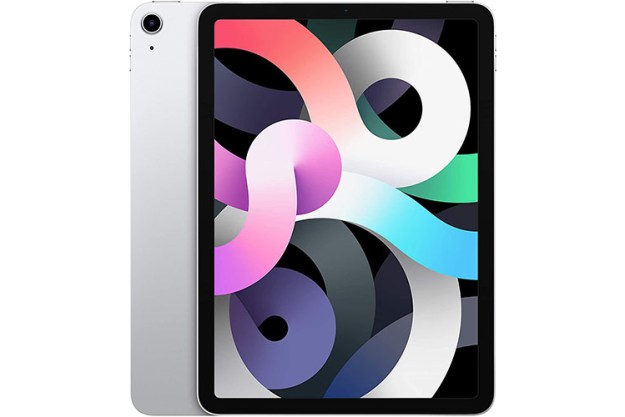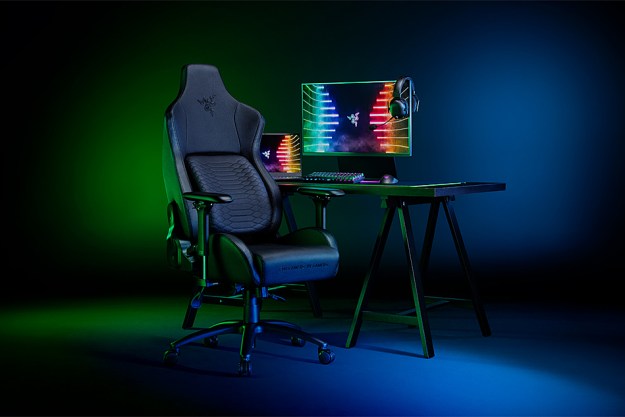Korean site Playwares recently published a review with benchmarks from Intel’s upcoming $999 “Hades Canyon” miniature PC. The review is no longer online, but that didn’t stop sleuths from grabbing everything they could before the article went offline, including the NUC’s hardware breakdown and gaming performance. The big deal is that the device sports a new “module” cramming together Intel’s processor with discrete AMD graphics into one chip.
For starters, here are the module’s specifications:
| Module: | Core i7-8809G |
| CPU architecture: |
Kaby Lake-G (14nm) |
| Cores: |
4 |
| Threads: |
8 |
| Base speed: |
3.10GHz |
| Max speed: |
4.20GHz |
| L3 Cache: |
8MB |
| Power use: |
100 watts (total package) |
| Integrated graphics: |
Intel HD Graphics 630 |
| Base speed: |
350MHz |
| Boost speed: |
1.10GHz |
| Discrete graphics: |
AMD Radeon RX Vega M GH Graphics |
| Compute units: |
24 |
| Cores: |
1,536 stream processors |
| Base speed: |
1,063MHz |
| Max speed: |
1,190MHz |
| FP32 Performance (max): |
3.7 TFLOPS |
| Discrete GPU dedicated memory: |
4GB HBM2 |
| Memory bandwidth: |
204.8GB/s |
| Memory bus: |
1024-bit |
| Memory clock: |
1.6Gb/s |
According to the benchmarks, AMD’s discrete GPU provides almost the same performance (3.7 TFLOPS) as Nvidia’s current GeForce GTX 1060 card (4.0 TFLOPS), only it’s part of a complete module with direct access to the CPU and dedicated memory.
But how well does Hades Canyon perform as a gaming “machine” despite its small form factor size? Take a look at the numbers in frames-per-second (the higher the better):
| Game | Default Average |
Overclocked Average |
| Rise of the Tomb Raider 1080P / Ultra / DX12 |
45.36 |
50.5 |
| Total War: Warhammer 1080P / Ultra / DX12 |
27.3 |
30.1 |
| The Division 1080P / Ultra / DX12 |
41.5 |
46.8 |
| For Honor Ultra |
47.44 (1080P) |
52.46 (1080P) |
| Assassin’s Creed Origins 1080P / Ultra |
34 |
40 |
| Rainbow Six Siege 1080P / Ultra |
85.1 |
94.7 |
| Metro 2033 Redux Very High |
53.81 (1080P) |
57.59 (1080P) |
| Overwatch 1080P / Epic |
65.15 |
81.41 |
| Battlegrounds 1080P / Custom |
65.15 |
69.53 |
| Tekken 7 Ultra |
60.75 (1080P) |
60.97 (1080P) |
Here we weeded out the synthetic tests – benchmarking games after disabling hardware and/or software to generate higher numbers – and a few minimum frame count entries. AMD’s discrete GPU appears to run just fine at 1,920 x 1080 with Ultra graphics settings, but gamers may want to consider cranking down the visual level a notch to squeeze out better 1080p performance.
On the processor side, Intel’s refreshed seventh-generation CPU cores (Intel says they’re 8th Gen H-Series) managed a 5268 single-core score in Geekbench, and a 17183 multi-core score. Overclocked, the module saw a single-core score of 5571 and a multi-core score of 18788.
Finally, here are the specifications for the reviewed Hades Canyon NUC:
| Model | NUC8i7HVK |
| Module: |
Core i7-8809G |
| Memory: |
2x empty SODIMM slots |
| Storage: |
1x empty M.2 22×40 slot |
| Connectivity: |
Wireless AC |
| Ports (front): |
1x SDXC card slot |
| Ports (back): |
2x Thunderbolt 3 |
| Audio: |
7.1 multi-channel digital audio |
| Power supply: |
230 watts |
| Dimensions: |
8.70 x 5.59 x 1.53 inches |
Intel’s NUC8i7HVK, along with the NUC8i7HNK packing the Core i7-8705G module, is expected to arrive this spring. You’ll need to purchase the memory, storage, and operating system separately.
Editors' Recommendations
- Intel adds Nvidia RTX gaming power to compact NUC 11 Enthusiast mini PC
- AMD’s new Radeon RX 5700 wants you to leave 1080p gaming behind for good



